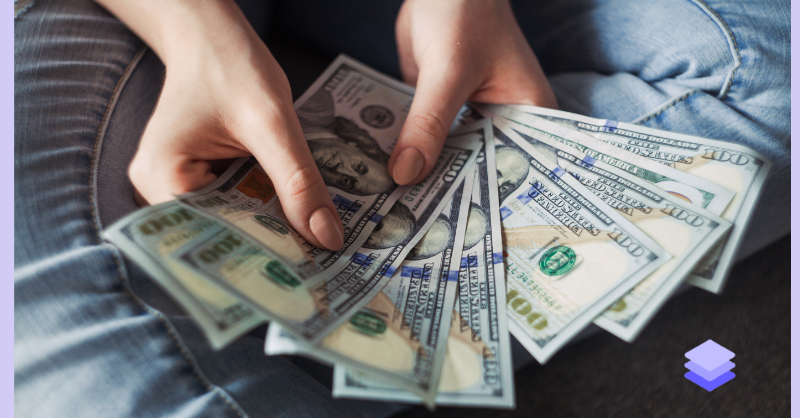There are 2 types of IRAs: traditional and Roth. When deciding which type of account to open, consider whether you want a tax break now (this year) or later (in retirement). #ItrustRetirementAccount
Individual retirement accounts (IRAs)
Accounts that aim to help you save for retirement generally offer tax advantages, which can help you get the most out of your savings. That’s why investment professionals often refer to IRAs as tax-advantaged accounts.
If you’ve earned income (i.e., income reported on Form W-2) or had self-employment income, you can contribute to an IRA.* Unlike an employer-sponsored retirement plan such as a 401(k) or 403(b), you can open and invest in an IRA without involvement from your employer.
Contribution limits
Because an IRA offers tax advantages, there’s a limit on the amount you can contribute each year. For the 2020 tax year, you can contribute up to $6,000 if you’re under age 50 and up to $7,000 if you’re age 50 or older.** Generally, you have until April 15 of the following year to make a contribution for a specific tax year.
Beneficiaries
As an IRA owner, you can designate one or more beneficiaries to inherit your account in the event of your death.
Your IRA beneficiary designations typically supersede any other instructions you leave, including in your legal documents and your will. So if you name your spouse as your IRA beneficiary in your will, but you designate your child on your IRA beneficiary designation form, your child will inherit your IRA.
If you don’t designate an IRA beneficiary, your assets will pass to your spouse (if you’re married at the time of your death) or your estate (if you’re not married at the time of your death). You should consider designating beneficiaries in accordance with your goals and legal documents when you open an IRA. You can always change them later as part of your frequent estate planning reviews.
Different IRA types
There are 2 types of IRAs: traditional and Roth. Both account types offer tax-advantaged growth, which means you won’t pay taxes on the earnings your investments generate while you’re saving for retirement.
The biggest difference between traditional and Roth IRAs is how and when the money you contribute (and withdraw in retirement) is taxed.
Traditional IRA
Contributions
If you contribute to a traditional IRA, you can deduct the amount from your income taxes.† For example, if your taxable income for 2021 is $50,000 and you contribute $3,000 to a traditional IRA, your taxable income for the year will be reduced to $47,000. This can reduce the amount of taxes you’ll be subject to each year you contribute.
If you don’t meet the requirements to deduct your IRA contributions, you have the option to contribute to a traditional IRA and not deduct the amount from your taxable income. This means you won’t pay taxes on your investment earnings while you save for retirement, and when you start taking withdrawals in retirement, a portion of your withdrawal (the amount you contributed) won’t be subject to income tax. (Just keep in mind that this approach requires excellent recordkeeping.)
Withdrawals
When you withdraw money in retirement (at age 59½ or older), the entire amount you withdraw—original contributions plus earnings—will be subject to income tax.
For example, say you’re retired and have $50,000 of taxable income from various sources—pensions, part-time employment, etc. If you withdraw $3,000 from your traditional IRA, your taxable income for the year increases by that amount. Instead of paying income tax on $50,000, you’ll pay income tax on $53,000.
If you make a withdrawal from a traditional IRA before you reach age 59½, you’ll be subject to a 10% federal penalty tax on the total amount you withdraw.††
RMDs
Once you reach a certain age, you’ll have to take a required minimum distribution (RMD) from your traditional IRA each year. Originally, this age was 70½. However, due to the Setting Every Community Up for Retirement Enhancement (SECURE) Act, if you reach the age of 70½ after December 31, 2019, you’ll be required to take RMDs starting in the year you turn 72. Your RMD amount is based on your retirement account balance on December 31 of the previous year.
Roth IRA
Contributions
If you qualify and contribute to a Roth IRA, you can’t deduct the amount you contribute from your income taxes. So making a Roth IRA contribution today doesn’t provide an immediate tax benefit.
Although the contribution limit for traditional and Roth IRAs is the same, the amount you can contribute to a Roth IRA may be reduced (or even eliminated) if your annual income exceeds a certain amount.**
Withdrawals
When you withdraw money in retirement (assuming you’re age 59½ or older and have held the account for 5 years or more), you won’t pay any taxes on withdrawals—original contributions or earnings. So if you’re retired and have $50,000 of taxable income, and you withdraw $3,000 from your Roth IRA, your taxable income remains the same.
Because you already paid taxes on your Roth IRA contributions, you can withdraw them anytime without being subject to taxes or a penalty. If you withdraw more than you’ve contributed (i.e., your earnings) from a Roth IRA before you reach age 59½, you’ll be subject to a 10% federal penalty tax on your earnings only.††
RMDs
Roth IRAs aren’t subject to RMDs during the owner’s lifetime, so you’re never required to take a withdrawal.
Open an IRA
You can open a traditional IRA, a Roth IRA, or both. The benefit to owning more than one type of retirement account is tax diversification, which can give you more flexibility when spending in retirement (and reduce future RMD amounts). Just remember that the annual contribution limit is per individual, not per account.
If you’re opening more than one type of IRA, you’ll need to go through the process for each account type. Here are a few tips to help you get started.
What you’ll need:
- About 10 minutes.
- Your bank account number and your bank’s routing number (if you’re transferring money electronically).
- Your current employer’s name and address (if you’re employed).
What you’ll need to decide:
- The IRA account type you want to open.
- If you want to designate beneficiaries (you can always change your designations later).
- How you’ll fund your new account (electronic bank transfer, check, or you can add the money later).
- What you’d like to do with your dividends and capital gains (you can change your mind later).
Tax treatment of dividends and capital gains in an IRA
Your investment may generate investment income—dividends and/or capital gains.
If you reinvest dividends and capital gains, they’ll be invested in your account, where they can generate their own earnings (which is called compounding). If you reinvest your dividends in a traditional or Roth IRA, you won’t pay annual taxes on them.
If you own your Roth IRA for 5 years or more and make a withdrawal when you’re age 59½ or older, you’ll never pay taxes on your reinvested dividends and capital gains.
If you own a traditional IRA and make a withdrawal when you’re age 59½ or older, you’ll pay ordinary income taxes on the entire amount you withdraw—including reinvested dividends and capital gains.
What to expect:
- We’ll review the information you provided and open your account.
- The money you initially invest will be automatically directed to a settlement fund, which is a money market mutual fund used to pay for and receive proceeds from brokerage transactions. Once your initial investment has been credited to your account, you can move some (or all) of your money to a different investment.
- You can sign up for web access to manage your account online.
Notes:
All investing is subject to risk, including the possible loss of the money you invest.
When taking withdrawals from an IRA before age 59½, you may have to pay ordinary income tax plus a 10% federal penalty tax.
We recommend that you consult a tax or financial advisor about your individual situation.





